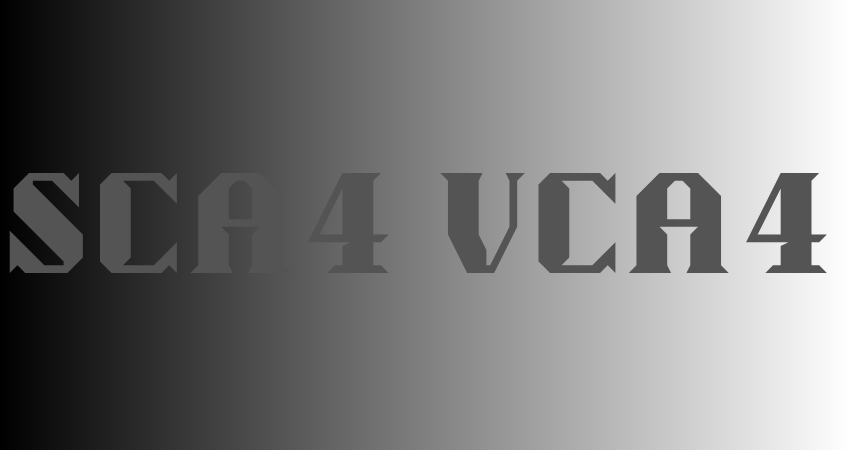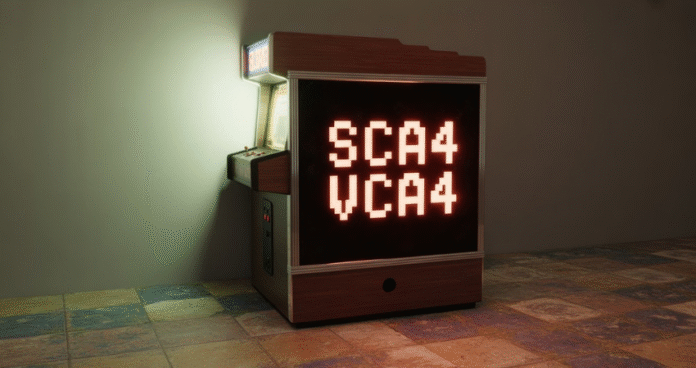Have you ever heard of sca4 vca4 and wondered what those cryptic acronyms stand for? Well, buckle up. These aren’t just combinations of letters—they represent serious medical conditions that impact lives on a deep, neurological level. Whether you’re a caregiver, a curious reader, or someone dealing with one of these diagnoses, this article will break down these complex conditions into clear, digestible insights.
What Is SCA4?
Genetic Background of SCA4
SCA4 is autosomal dominant, meaning you only need to inherit the faulty gene from one parent to be affected. Mutations in the ATXN4 gene are the usual culprits, though exact causes can vary slightly.
Symptoms of SCA4
Think of walking on a tightrope while dizzy—that’s often how people with SCA4 describe their condition.
Key Symptoms Include:
-
Unsteady gait
-
Difficulty with fine motor skills (like writing or buttoning a shirt)
-
Slurred speech
-
Involuntary eye movements
-
Some cognitive decline in later stages
The condition may start subtly but progresses steadily, impacting day-to-day independence.

Diagnosing SCA4
Clinical Evaluations
Doctors typically start with a neurological exam to check balance, coordination, reflexes, and more.
Imaging
MRI scans can reveal cerebellar atrophy—essentially, the shrinking of that crucial movement-controlling part of your brain.
Genetic Testing
This is the gold standard for diagnosis. If a family history exists, testing becomes even more important for early intervention.
What Is VCA4?
While VCA4 may sound similar to SCA4, it represents a different neurological condition entirely. It’s believed to be Vascular Cognitive Ataxia, a subset or variation influenced by vascular issues affecting cognition and balance.
Genetic vs Vascular
Unlike SCA4, which is purely genetic, VCA4 can have contributing factors like:
-
Small strokes
-
Poor blood flow to the brain
-
Underlying cardiovascular issues
Symptoms of VCA4
These can overlap with SCA4 but often focus more on cognitive dysfunctions, such as:
-
Memory problems
-
Difficulty focusing
-
Trouble with problem-solving
-
Gait abnormalities similar to Parkinson’s or dementia
Diagnosing VCA4
Tools Used:
-
Neuropsychological testing
-
Brain MRIs showing white matter lesions
-
Vascular imaging like CT angiography
Differentiating it from other dementias or ataxias is critical, making this a specialist’s job.
SCA4 vs VCA4: Key Differences
| Feature | SCA4 | VCA4 |
|---|---|---|
| Cause | Genetic (ATXN4 mutation) | Vascular (stroke or blood flow) |
| Onset | Often earlier (30s-50s) | Typically older adults |
| Primary Focus | Coordination & balance issues | Cognitive impairment + gait |
| Diagnosis | Genetic test, MRI | MRI + vascular studies |
| Treatment | Symptom management | Manage vascular risk + symptoms |
Living With SCA4 and VCA4
It’s not just the patient who’s affected—families, caregivers, and friends feel the ripple effects.
Everyday Challenges:
-
Falling risks
-
Communication breakdowns
-
Emotional distress and anxiety
-
Social withdrawal
But with support, it’s possible to retain dignity and quality of life.
Treatments and Therapies
There’s no cure—yet. But don’t lose hope.
For SCA4:
-
Physical therapy
-
Speech therapy
-
Mobility aids
-
Regular neurologist visits
For VCA4:
-
Control blood pressure, cholesterol
-
Cognitive therapy
-
Blood-thinner medications if strokes involved
Holistic Healing
Sometimes, the best medicine isn’t found in a pill.
Lifestyle Tweaks That Help:
-
Mediterranean diet (great for brain and blood vessels)
-
Regular, safe physical activity
-
Mindfulness meditation to ease mental load
-
Deep family and community involvement

Advances in Research
From CRISPR gene-editing studies to targeted drug therapies, researchers are pushing the envelope. Early diagnosis sca4 vca4 can eventually lead to personalized treatment, something that could completely transform lives.
Awareness Is Power
The more we know, the more we can help. Neurological disorders are complex—but not invisible. Advocating for research funding, joining awareness walks, or even just sharing this article can move the needle forward.
Conclusion
Both sca4 vca4 are serious, life-changing conditions. They affect how we move, think, and interact with the world. But with the right support, early detection, and continued research, there’s a real chance to improve—and eventually, perhaps even cure—these conditions.
FAQs
1. What causes SCA4?
SCA4 is caused by a genetic mutation, usually inherited in an autosomal dominant fashion, affecting coordination and balance.
2. Is VCA4 hereditary?
Unlike SCA4, VCA4 is typically not genetic. It’s more linked to vascular problems like mini-strokes or chronic hypertension.
3. Can you treat or cure SCA4/VCA4?
There’s no cure yet, but symptoms can be managed effectively through a combination of therapies, medications, and lifestyle changes.
4. How are SCA4 and VCA4 different?
SCA4 is genetic and primarily affects motor functions, while VCA4 is vascular-based and involves both cognitive and motor symptoms.
5. What support is available for patients and families?
Neurologists, therapists, genetic counselors, support groups, and online communities all provide valuable support and resources.


